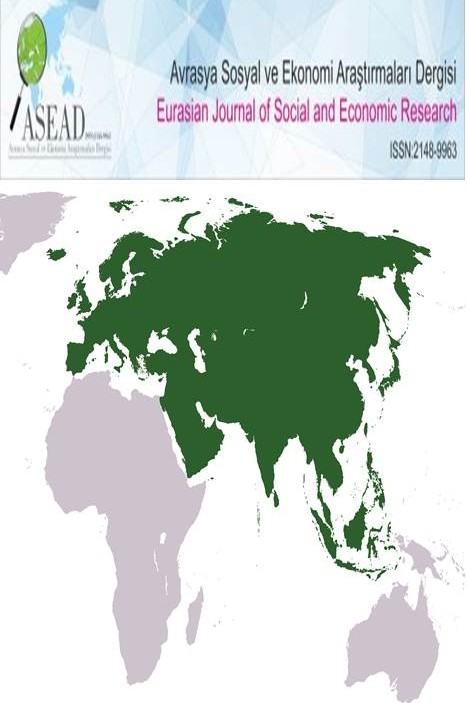MAKRO EKONOMİDE TEORİK KARŞILAŞTIRMALAR ve ÖNERİLER
Neo Klasikler, Rasyonel
___
- AKERLOF, G., & YELLEN, J. (1985, September). Can Small Deviations From Rationality Make Significant Differences to Economic Equilibria? (E. DUFLO, Dü.) American Economic Review, 708-721.
- BALANCHARD , O., & KIYOTAKI, N. (1987, September). Monopolistic Competition and Effects of Aggregate Demand. American Economic Review, 647-666.
- BALL, L., MANKIW, N. G., & ROMER, D. (1988:1). The New Keynesian Economics and the Output-Enflation Trade Off. Brooking Papers on Economic Activity, PP:1-65.
- BOSCHEN, J., & MILLS, L. (1990, June/July). Monetary Policy with a New View of Potential GNP. Business Review, PP.3-10.
- CORNWALL, K. (1978). Macroeconomics. New York: Eicher, A.Ş.
- FISHER, S. (1977, February). Long-Term Contracts, Rational Expectations ,an the Optimal Money Supply Rule. Journal of Political Economy, PP:191-205.
- GORDON, R. (1990, September). What Is New Keynetsian Economics. Journal of Economic Literature, PP:1115-71.
- KATZ, L. (1988,Part 2, August). Some Recent onomicsDevelopments in Labor Economics and Their Imlications for Macroec. Journal of Money, Credit, and Banking, PP:507-30.
- LİPSEY, R. G., STEINER, P. O., PURVİS, D. D., & COURANT, P. N. (1990). Economics (9. b.). (D. CONTE, Dü.) New York, A.B.D: Harper&Row. EKİM 2017 tarihinde alındı
- LUCAS, R. (1973, June). Some International Evidence on Output-Inlation Tradeoffs. American Economics Review, PP:326-34.
- MANKIN, N. G. (1985, May). Small Menu Costs and Large BusinessCycles:A Macroeconomic Model of Monopoly. Querterly Journal of Economics, 529-537.
- McCALLUM, B. T. (1989). Monetary Economics. New York: Macmillian Publishing Company.
- MISHKIN, F. (1983). A Rational Expectations Approach to Macroeconometrics. University of Chicago Press. http://www.nber.org/books/mish83-1 &: http://www.nber.org/chapters/c10241 adresinden alındı
- MISHKIN, F. S. (1992). The Economics of Money,Banking,and Financial Markets (3 b.). (B. KAPLAN, Dü.) New York, ABD: Harper Collins.
- PARASIZ, M. İ. (1994). Para Banka ve Finansal Piyasalar (5. b.). Bursa: Ezgi Kitabevi Yayınları.
- PARKİN, M. (1986). The Output-Inflation Tradeoff When Prices Are Costly to Change. Journal of Political Economy, 200-224.
- SARGENT, T., & WALLACE, N. (1975, April). Rational ' Expectation,the Optimal Monetary Instrument and The Optimal Money Supply Rule. Journal of PoliticalEconomy, PP:241-54.
- SAVAŞ, V. (1986). Keynezyen İktisat Yıkılırken (2. b.). İstanbul: Beta Basım ve Yay.
- SVENSSON, L. (1986). Sticky Goods Prices,Flexible Asset Prices,Monopolistic Copetition,an Monetary Policy. Review of Economic Studies, 385-405.
- TAYLOR, J. (1980). Aggregate Dynamics and Staggered Contracts. Journal of Political Economy, PP:326-34.
- WALLACE, N. (1975). Rational" Expectations, the Optimal Monetary Instrument, and the Optimal Money Supply Rule (Cilt No. 2). Apr.: The University of Chicago Press. 1917 tarihinde https://www.jstor.org/stable/ adresinden alındı
- Yayın Aralığı: Yılda 4 Sayı
- Başlangıç: 2014
- Yayıncı: İrfan TÜRKOĞLU
OYUNCULUK EĞİTİMİNDE DANSIN BEDENSEL İFADEYE KATKISI
MAKRO EKONOMİDE TEORİK KARŞILAŞTIRMALAR ve ÖNERİLER
KÜRESELLEŞEN DÜNYADA KRİZ YÖNETİMİNİN ÖNEMİ
QUALITY OF LIFE MEASUREMENT: THE APPLICATION OF ANALYTIC HIERARCHY PROCESS METHOD
TAZİYE MECLİSLERİNDE KUR’ÂN KIRAATİ SORUNU: URFA ÖRNEĞİ
STRATEJİK LİDERLİK, YENİLİKÇİ İKLİM VE LİDER İLE ÖZDEŞLEŞME ARASINDAKİ ETKİLEŞİMLER
JAMES BOND FİLMLERİ VE İNSAN İSTİHBARATI
